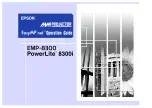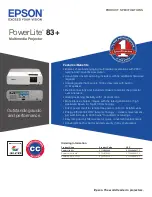
18 Intended
use
2.6
Limitations on VitaGuard®’s intended use
Even when operated in accordance with its intended use, Vita-
Guard® cannot detect all life-threatening situations under certain
unfavorable conditions.
2.6.1 Obstructive apneas are not detected
Obstructive apneas are not detected by VitaGuard®. The caregiver
may have to remove food debris from the patient’s oral cavity.
When an obstructive apnea at the same time triggers a bradycardia
alarm (heart rate too low), resuscitation measures may need to be
taken.
2.6.2 Limitations of the heart rate and central apnea
monitor
VitaGuard® could misinterpret movements as respiration, e.g. in
ambulances, cars, and prams or when a child is held in the arms. For
this reason central apneas can be detected only when the patient is
sleeping or is lying still, does not move, and is not being moved.
The heart rate can be monitored with electrodes also when the
patient is moving, but sudden, vigorous movements can adversely
affect the measuring accuracy.
A false heart rate is displayed during ventricular fibrillation or when
the heart rate exceeds 270 beats per minute.
Summary of Contents for VitaGuard VG2100
Page 1: ...VitaGuard VG2100 Apnea and Heart Rate Monitor Operating instructions...
Page 2: ......
Page 4: ......
Page 10: ...Table of contents...
Page 111: ...Evaluating stored data on a PC 111 Fig 72 VitaWin register Events in graph form...
Page 122: ...122 Table of figures...
Page 123: ......
















































